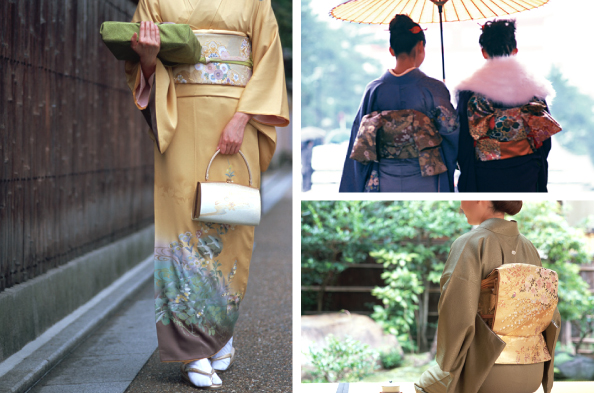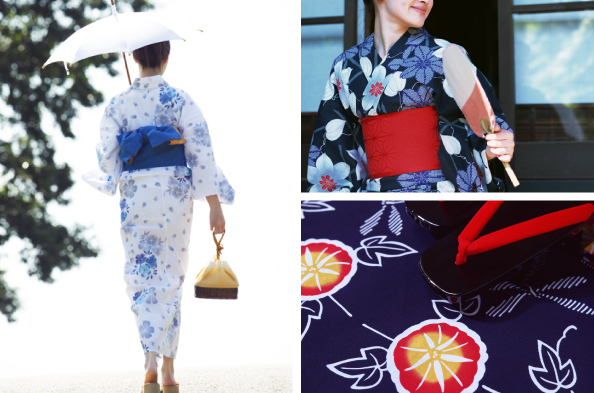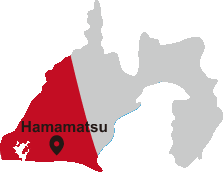Japan's traditional garment
Kimono
The kimono is Japan's traditional garment, cut on a straight line and then constructed by sewing the panels together in a technique called "straight-line cutting" (chokusendachi). This shape became established in the Heian Period (794-1192). The garment was revolutionary for that time, as it provided various ingenious features: the straight-seamed kimono could be easily folded, layered when it was cold, and made of cool materials like linen when it was hot. Little by little, the diversity of kimono increased, and the garment took root in the lives of Japanese people.In the later Edo Period (1603-1898), kimono craftsmanship rapidly developed as "the uniform of warriors," the value of kimono themselves increasingly became viewed as an applied art.


However, in the Meiji Period (1868-1912), Japan became strongly influenced by foreign culture. Government officials and soldiers received such orders as "Western clothing must be worn in official locations," and the environment in which people lived underwent rapid changes. Then, gradually, even in the realm of daily life, people began wearing Western clothes which were easy to put on and take off, and the proportion of people who wore kimono declined.
Today, kimono are thought of as one's finest formal clothes, and the view that they are to be worn for special occasions is spreading. Thus, as special occasion garments, kimono that are elaborately and splendidly ornamented have become more prevalent. However, the classic patterns that have been used since antiquity remain popular without alteration, and although the daily use of kimono has declined, kimono culture continues in the garment's capacity as Japan's traditional attire.
Yukata

Originally, when bathhouses were commonly used by ordinary people, the yukata was born as a cool and quickly-donned version of the kimono. For that reason, it was originally worn as a dressing gown, but because of its ease of wear, it gradually came to be used as a casual garment, and became established as summer clothing.At first, yukata were primarily made of white or dark blue cloth. The reason was that white cloth allowed a person to feel cool while going about his or her business inside the home during the day, and because insects hate the scent of the indigo used to dye the dark blue cloth, indigo robes were worn as a kind of insect repellent in the evenings, when bugs became prevalent.
Today, the use of yukata has decreased along with that of kimono, but because of yukata's poetic association with the summer, they are now worn at summer festivals and fireworks displays. The number of fashionable patterns has increased, and along with the fact that they are more comfortable to wear than a kimono and can only be enjoyed in the summer, yukata enjoy great popularity with women in particular.
2019.10.7 update
Content may be subject to change after publication. Please also note that we are not accountable for loses and damages that may occur as a result of said changes.
Content may be subject to change after publication. Please also note that we are not accountable for loses and damages that may occur as a result of said changes.





